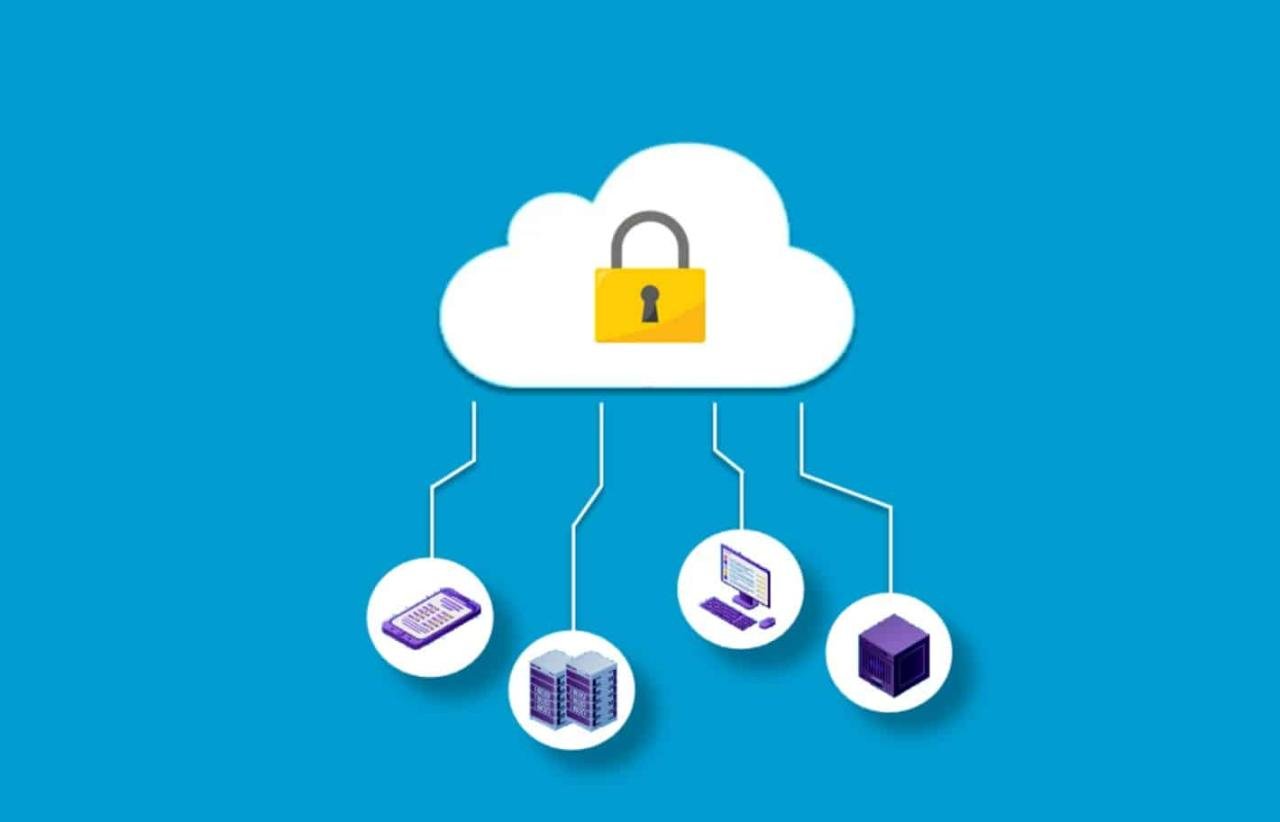The migration of data and applications to the cloud has been a defining trend of the 21st century, offering businesses unparalleled scalability, flexibility, and cost efficiency. However, this transformative shift has also created a new and complex landscape for cybersecurity. Cloud Security’s Next Frontier is no longer just about protecting data in a virtual environment; it is a holistic discipline that is fundamentally reshaping how organizations approach risk, compliance, and resilience. This article will provide a comprehensive look into the evolving threats and innovative solutions that are defining the future of cloud security. We will explore the key challenges, from multi-cloud complexity and misconfigurations to the new era of AI-powered threats. We will also delve into the strategic imperatives and cutting-edge technologies that are empowering businesses to stay ahead of the curve, ensuring that the cloud remains a secure and trustworthy foundation for the digital economy.
The Evolution of Cloud Security Threats

As cloud adoption has matured, so have the threats. Attackers are no longer just targeting on-premises networks; they have developed sophisticated new techniques to exploit the unique vulnerabilities of cloud environments. Understanding this evolving threat landscape is the first step in building a resilient security posture.
A. The Misconfiguration Epidemic: One of the most common and damaging threats to cloud security is a simple misconfiguration. This occurs when a user or an administrator incorrectly sets up a cloud service, leaving a digital door wide open for an attacker.
- S3 Bucket Breaches: A classic example is an Amazon S3 bucket that is not configured with the correct access controls, allowing anyone to download or delete the data stored inside. These misconfigurations have led to some of the largest data breaches in recent years, exposing millions of sensitive records.
- IAM (Identity and Access Management) Errors: Improperly configured IAM policies, which control who can access what in a cloud environment, are another major vulnerability. An overly permissive policy could grant an attacker access to a company’s most sensitive data. The legal and financial consequences of a misconfiguration are a major driver of modern cloud security strategy.
B. AI-Powered Threats and Attacks: The same artificial intelligence (AI) that is driving business innovation is also being weaponized by attackers.
- Advanced Phishing: AI can be used to create highly realistic and personalized phishing emails that are difficult to distinguish from legitimate messages. These attacks are designed to trick an employee into giving up their credentials, which can be used to gain access to a company’s cloud environment.
- Automated Exploits: AI can also be used to automatically scan a company’s cloud infrastructure for vulnerabilities and to launch exploits at a speed that a human attacker could never achieve. This new era of automated attacks requires a new era of automated defense.
C. Multi-Cloud Complexity and Sprawl: The trend of using multiple cloud providers (multi-cloud) offers businesses flexibility but also introduces a new layer of security complexity.
- Inconsistent Security Controls: Each cloud provider has its own set of security tools and policies. This can lead to inconsistent security controls across a multi-cloud environment, creating blind spots and vulnerabilities.
- Cloud Sprawl: As a company’s use of the cloud grows, it can be difficult to keep track of all the different services and virtual machines that are running. This “cloud sprawl” can lead to a new type of vulnerability, where a company is not even aware that a cloud service is running, let alone that it is not secured.
D. The Rise of Cloud-Native Attacks: As applications are developed and deployed directly on the cloud (cloud-native), attackers are developing new techniques to target these applications.
- Container Exploits: Containers, which are a popular way to package and deploy applications, have their own set of security vulnerabilities. An attacker who can exploit a vulnerability in a container can gain access to the underlying cloud infrastructure.
- API Security: The application programming interfaces (APIs) that allow different cloud services to communicate with each other are a new and attractive target for attackers. A vulnerability in an API can be used to steal data or to launch a denial-of-service (DDoS) attack.
The New Frontiers of Cloud Security Solutions

In response to this evolving threat landscape, a new generation of cloud security solutions is emerging. These solutions are more proactive, automated, and holistic, designed to secure the entire cloud environment from end to end.
A. Cloud Security Posture Management (CSPM): CSPM is a critical tool for fighting the misconfiguration epidemic.
- Automated Scanning: A CSPM platform automatically scans a company’s cloud environment for misconfigurations and vulnerabilities. It can, for example, detect an S3 bucket that is not configured with the correct access controls or an IAM policy that is too permissive.
- Real-Time Remediation: The best CSPM platforms can also automatically remediate a misconfiguration, without the need for a human to intervene. This new era of automated security is a game-changer for businesses that are trying to manage the security of a large and complex cloud environment.
B. Cloud-Native Application Protection Platforms (CNAPP): CNAPP is a new type of security platform that is designed to secure cloud-native applications from development to deployment.
- Full-Lifecycle Protection: A CNAPP platform provides a holistic view of a company’s security posture, from the code that is being written by a developer to the containers that are running in production. It can, for example, detect a vulnerability in a container image before it is deployed, or it can monitor a running application for a sign of an attack.
- Shift-Left Security: CNAPP embodies the “shift-left” security philosophy, which holds that security should be integrated into the development process from the very beginning, rather than being added as an afterthought. This new approach is more efficient and more effective at preventing security breaches.
C. Identity and Access Management (IAM): IAM is a critical part of cloud security.
- Zero Trust: The “Zero Trust” security model is a major new trend in IAM. It holds that no user or device should be trusted by default, even if they are inside a company’s network. Every request for access to a cloud service must be verified, regardless of who is making it.
- Multi-Factor Authentication (MFA): MFA is a simple but highly effective way to secure a user’s account. It requires a user to provide more than one form of authentication, such as a password and a code from their phone, before they can access a cloud service.
D. Security Information and Event Management (SIEM): SIEM is a security tool that is used to collect and analyze security logs from a variety of sources.
- AI-Powered Analysis: The next generation of SIEM platforms is being powered by AI and machine learning. These systems can analyze vast amounts of log data in real time, detecting anomalies and potential threats that a human analyst might miss.
- Automated Response: The best SIEM platforms can also automatically respond to a threat, for example, by isolating a compromised server or by blocking an attacker’s IP address. This new era of automated response is a game-changer for businesses that are trying to manage the security of a large and complex cloud environment.
The Strategic Imperatives for Cloud Security
In an environment of constantly evolving threats and solutions, a successful cloud security strategy is built on a foundation of a few key imperatives.
A. Embrace a Proactive Security Posture: The days of a reactive security posture are over.
- Security by Design: Security must be integrated into a company’s cloud strategy from the very beginning, not added as an afterthought. This includes using a secure architecture, a secure development lifecycle, and a robust set of security controls.
- Threat Intelligence: A company must have a continuous feed of threat intelligence to stay informed about the latest threats and vulnerabilities. This intelligence can be used to update a company’s security policies and to proactively hunt for threats in its environment.
B. Invest in a Cloud Security Team and Expertise: The security of a cloud environment is a complex task that requires a specialized set of skills.
- Cloud Security Engineers: Companies must invest in a team of cloud security engineers who have a deep understanding of the unique security challenges of the cloud.
- Third-Party Expertise: For companies that do not have the resources to build their own team, a managed security service provider (MSSP) can be a great option. An MSSP can provide a company with a team of cloud security experts and a suite of security tools.
C. Automate Everything You Can: The speed and scale of modern cloud threats require a new era of automated security.
- Automated Remediation: Automate the remediation of misconfigurations and vulnerabilities.
- Automated Threat Detection: Use AI-powered SIEM platforms to automatically detect and respond to threats.
- Security as Code: The “Security as Code” philosophy holds that security policies and controls should be defined and managed in code. This allows for a more consistent and automated approach to security.
D. Prioritize Compliance and Governance: The legal and financial consequences of a security breach are a major driver of cloud security strategy.
- Compliance Audits: Companies must regularly conduct compliance audits to ensure they are in compliance with all relevant regulations, such as GDPR and HIPAA.
- Data Governance: A company must have a clear data governance strategy that defines what data is stored in the cloud, who can access it, and how it is protected.
Conclusion
Cloud Security’s Next Frontier is a story of a new era of cybersecurity, one that is more proactive, more automated, and more holistic. The challenges are immense, from the complexity of multi-cloud environments to the new era of AI-powered threats. However, the opportunity is even greater: to build a more resilient, ethical, and trustworthy digital future. The decisions we make today will not only shape the future of cloud security but also define our relationship with data, technology, and the very concept of trust in a digital world. The future of cloud security is here, and it is a new era of proactive defense, technological innovation, and a deep commitment to protecting the digital assets that are the foundation of our modern society.










